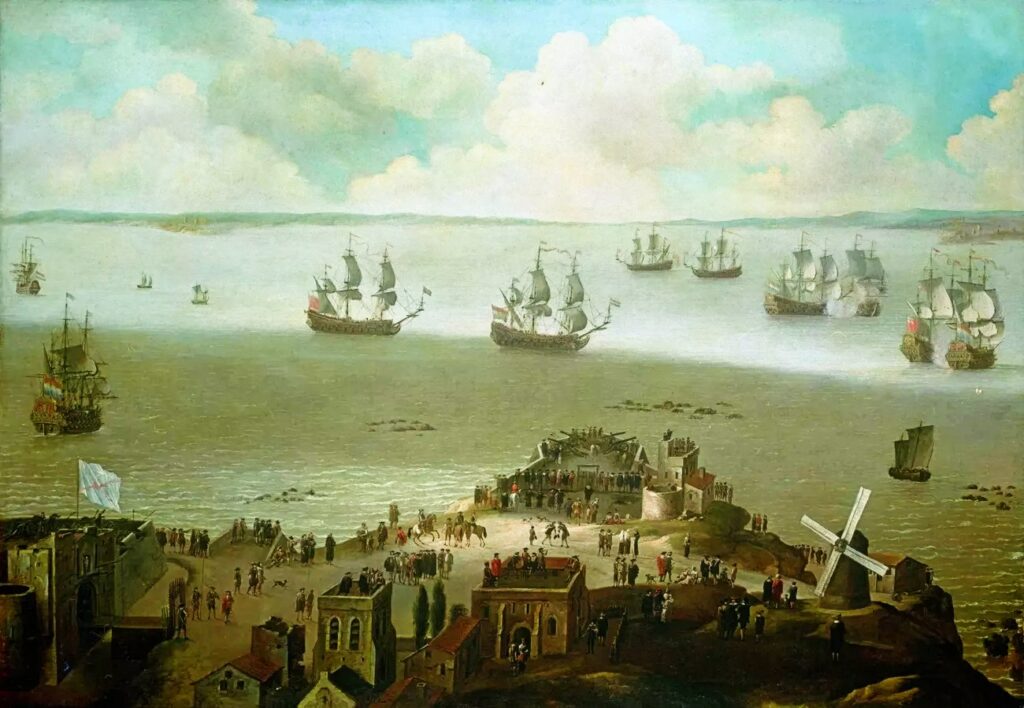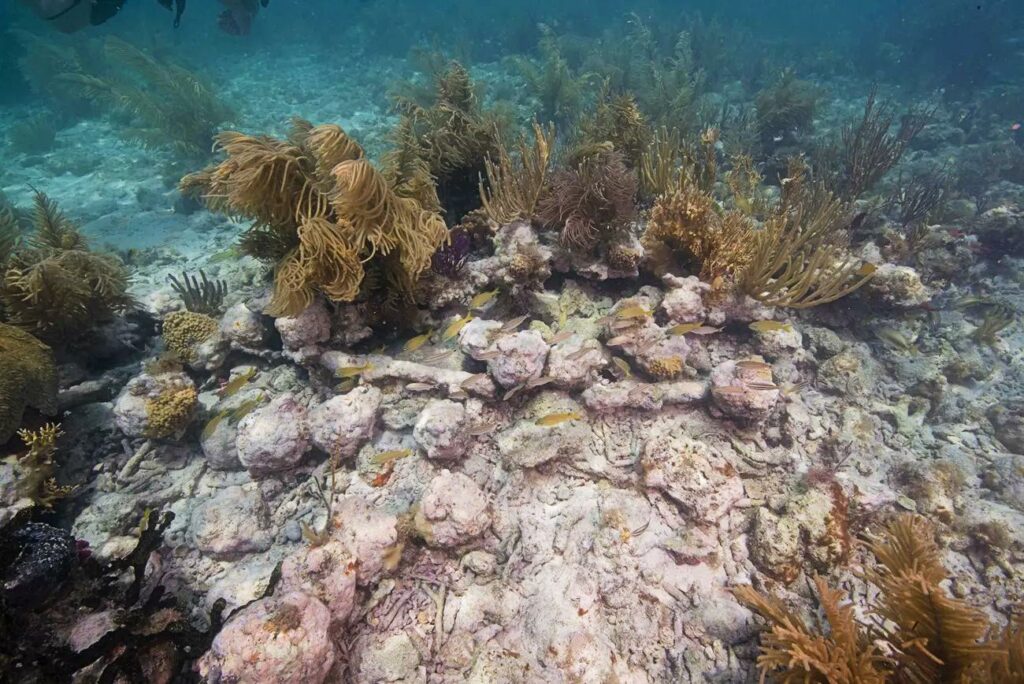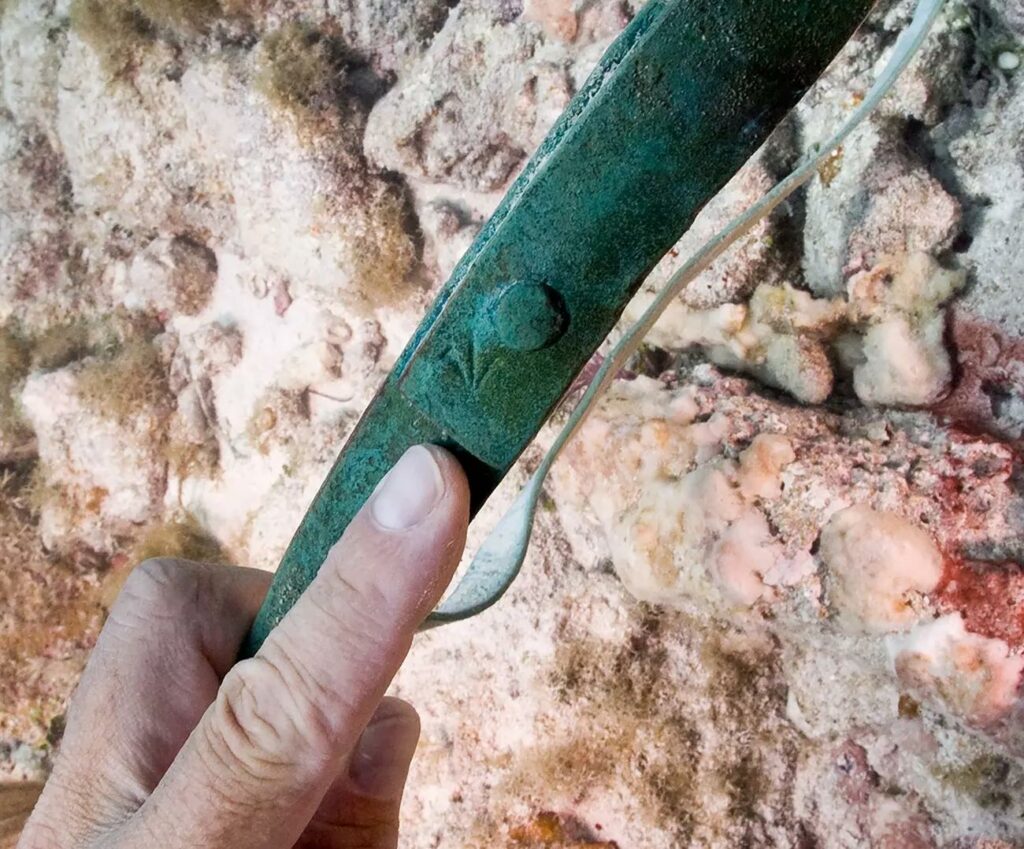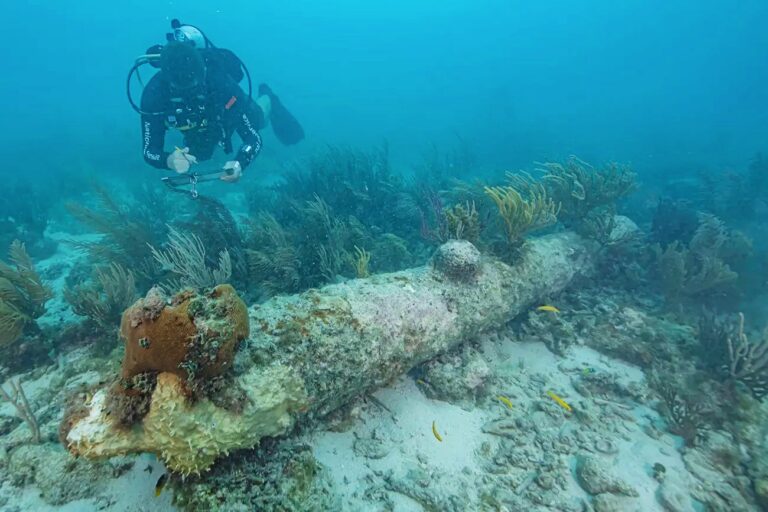A shipwreck discovered in the Dry Tortugas National Park west of the Florida Keys had long been suspected to be a 17th-century-built British warship – and now its identity has finally been proven by a team of archaeological divers.
The 50-gun ship of the line HMS Tyger was in naval service for almost a century. The 39m frigate was built in 1647 but met its end only in 1742, after running aground on the Dry Tortugas reefs during the War of Jenkins Ear between Britain and Spain.

The shipwreck was first located back in 1993 but could not be positively identified. Based on leads from historical research, in 2021 archaeological divers from the National Park Service's submerged resources and south-east archaeological centres carried out a comprehensive survey of the site.
Their discovery of five cannon some 460m from the main wreck-site proved pivotal. Buried in the margins of old logbooks was a reference to the crew having “lightened her forward” after they had first run aground, and by reducing the weight onboard they had briefly succeeded in refloating the vessel before it sank in shallow water.
Based on the guns’ size, features and location they were determined to be some of the six- and nine-pound cannon that would have been jettisoned when HMS Tyger first ran aground.
This discovery, along with a detailed re-evaluation of the main wreck site, where items such as cannonballs, anchor and an inscribed copper barrel band were found, concluded the identification, and the team’s findings have been published in the International Journal of Nautical Archaeology.

Based in Cuba under the command of Captain Edward Herbert, HMS Tyger had been pursuing Spanish vessels into the Gulf of Mexico when it grounded on a reef on 13 January, 1742, eventually forcing the crew to abandon ship,
The 281 men, including five commissioned officers and 57 marines, spent more than two months marooned on the deserted island that is today Garden Key.
Battling heat, mosquitoes and thirst, they repurposed some of the ship's timbers to build fortifications that 100 years later would become the Fort Jefferson landmark that now dominates the island.

Other timbers were used to build vessels in bids to escape the island, but in the end they managed to rebuild and float another nearby shipwreck, evaded Spanish patrols and made a 1,125km voyage to safety in Port Royal, Jamaica.
Like other Dry Tortugas National Park sites, the wreck is said to be routinely monitored but the positive ID should bring the additional protection offered under the USA’s Sunken Military Craft Act of 2004. The HMS Tyger wreckand its associated artefacts remain Britain’s sovereign property.
“This discovery highlights the importance of preservation in place as future generations of archaeologists, armed with more advanced technologies and research tools, are able to re-examine sites and make new discoveries,” said Josh Marano, the maritime archaeologist who led the team that made the discovery.
Also on Divernet: ‘Too easy’: key 16th-century Spanish wreck found in Florida, Treasure-hunter’s bid to salvage shallow wreck overturned, Anchor find comes with weighty history, Early USA button found on British shipwreck

